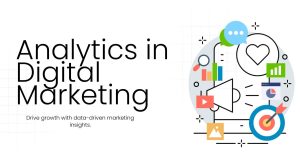How to Promote Digital Literacy: A Practical Handbook for a Connected World

Digital literacy is not just a flashy 21st-century term but an indispensable skill set in a tech-driven world. Whether you are running a business, in school, or just navigating modern life, digital literacy is a must. But how to promote digital literacy, and how do we help its growth in various communities?
This handbook discusses what we can all do to help drive digital literacy, empowering people with the knowledge and the skills they need to participate in a digital world.
What Is Digital Literacy?
Digital literacy is the capacity to engage and act in the digital world using digital tools, platforms, and resources. This is more than being able to turn on a computer or send an email. It encompasses:
- Online content: Looking for information and differentiating reliable sources from unreliable sources.
- Communication: Knowing how to communicate properly over email, messaging apps, and collaborative platforms.
- Learning digital safety: How to protect personal information, guard against scams, and manage privacy settings.
- Writing digital content: Whether it’s writing blogs or constructing websites, content creation is an essential part of digital competence.
- Minute-taking: A skill that has long carried me as a young professional.
Developing digital literacy is not only about mastering tech skills; it’s about emboldening people to participate in and adapt to a changing digital landscape. How to promote digital literacy begins with defining and understanding it.
Why Digital Literacy Matters
Technology touches almost everything we do. Which is why digital literacy is more important than ever. Understanding how to promote digital literacy is essential because it empowers people to:
- Workforce Readiness: Over half of jobs now require digital tools skills.
- Economic Opportunities: Remote work, e-commerce, and income-generating possibilities.
- Accessing Information: Ability to locate reliable, relevant, authentic online information.
- Online Safety: Reduced vulnerability to scams like phishing or identity theft.
- Social Inclusion: Ensures everyone can participate, form relationships, and access essential services.
How to Promote Digital Literacy: Tangible Steps You Can Take
1. Start with Education and Awareness
How to promote digital literacy in schools, workplaces, and community centers starts with the basics.
Implementation Recommendations:
- Run workshops in basic technology for different age groups.
- Collaborate with schools or libraries to offer free internet and skills training.
- Provide self-learning guides and resources (like “Hour of Code”).
2. Promote the Availability of Low-Cost Technology
Access is the greatest barrier when figuring out how to promote digital literacy.
Implementation Ideas:
- Advocate for affordable devices and internet access policies.
- Encourage tech donations from businesses to underserved communities.
- Establish public hotspots and Wi-Fi areas.
- Use libraries as tech hubs for access and education.
3. Foster Collaboration Between Organizations
How to promote digital literacy becomes easier through partnerships.
Implementation Recommendations:
- Launch digital skills workshops through joint efforts.
- Leverage corporate CSR to support campaigns.
- Encourage mentorship programs between tech-savvy individuals and learners.
4. Develop Content That Features Digital Dilemmas
To effectively promote digital literacy, content must be relatable and useful.
Implementation Recommendations:
- Publish articles and videos on topics like scam awareness and secure transactions.
- Collaborate with influencers to spread the word.
- Use gamified tools like cybersecurity quizzes to enhance engagement.
5. Embed Digital Literacy in the Workforce
Many workers lack confidence using modern tech—promoting digital literacy at work is critical.
Implications:
- Provide training on spreadsheets, video conferencing, and cloud tools.
- Teach email etiquette, presentation design, and team communication tools.
- Monitor tech skill gaps and address them with focused sessions.
6. Put Inclusivity and Accessibility First
How to promote digital literacy must account for the diversity in learning abilities and access.
Implementation Recommendations:
- Create specialized resources for seniors and differently-abled individuals.
- Ensure closed captions, alt text, and screen reader compatibility.
- Partner with local groups to engage marginalized populations.
7. Focus on Lifelong Learning
Staying digitally literate is an ongoing journey. Part of how to promote digital literacy is embracing constant evolution.
Recommendations for Use:
- Motivate learners to explore new platforms and tools.
- Encourage ongoing digital training in schools and businesses.
- Share newsletters and blogs discussing emerging tech trends.
Educating a Future Generation of Digital Citizens
Digital literacy isn’t just about teaching individuals to use technology, but empowering them to connect, create and contribute. Whether you are a policymaker, teacher, business owner, or community leader, you are essential in understanding and acting on how to promote digital literacy.
Start small—host a workshop or share a digital guide. Collaborate with others. Most importantly, keep updating your own digital skills. How to promote digital literacy starts with you.
Together, we can close the digital divide and achieve a more connected and inclusive future.
You can Learn more: What Is the Most Powerful Word in Marketing?





